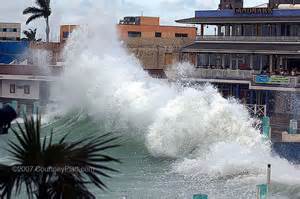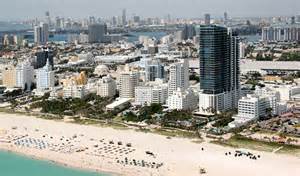December 23, 2014 – Southern Florida is the most vulnerable floodplain in the United States. The City of Miami Beach to protect itself from storm surges is attempting to implement a $300 million deflection project. But to get the money it needs to collect more taxes. And where is it getting these taxes from? Development fees and taxes from builders.
Florida collects no state income tax. Property taxes, therefore, are the only means to fund infrastructure development. So to get property tax revenues up the city is permitting shoreline property developers to build 47 new condominiums in Miami Beach. And people are buying.
Consider what climate scientists are predicting for South Florida as sea levels continue to rise from a warming ocean and melting polar glaciers and sea ice. One climatologist, David Zierden, at Florida State University, recently stated “When you consider current hurricane threats, and the sea level rise that could erode these properties….Common sense says no, you shouldn’t do it.”
The project Miami Beach has undertaken includes 80 storm pumps that can pump sea water back into Biscayne Bay at a rate of 53,000 liters (14,000 gallons) per minute. This may help to mitigate the current state of frequent flooding that occurs at high tide but will it withstand sea levels that rise by a mean average of 0.4 meters (1.3 feet) in the next 85 years? And that 0.4 meters rise is a low-end estimate representing a global mean. Recent research done at Florida State University suggests a much more dire predicament, a local sea level rise of 81 centimeters (32 inches).
Of course the numbers above only cover a calm sea. Storm surges both in winter and during hurricane season will actively erode the Miami Beach area far beyond the impacts of rising sea levels. A single storm surge of 50 centimeters (19 inches) today is close to half the average elevation of the City which stands at 1.2 meters (4 feet). Now imagine a higher sea level combined with a storm surge and the entire City could be inundated.
Today Miami Beach loses its beaches with great regularity after Atlantic Ocean storms. Sand is imported to keep up the appearance of continuity. But that is far from the case.
With the City celebrating its 100th birthday the question is, will it be around for the next one hundred?














